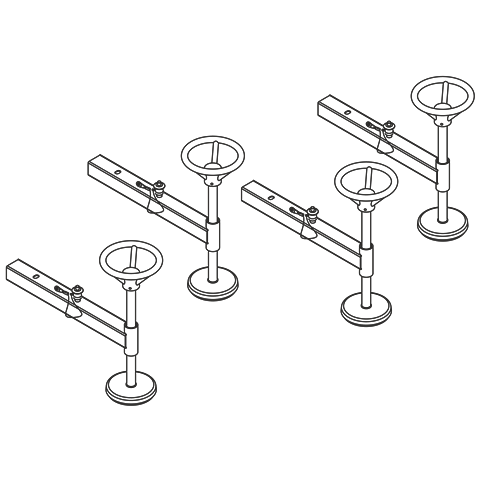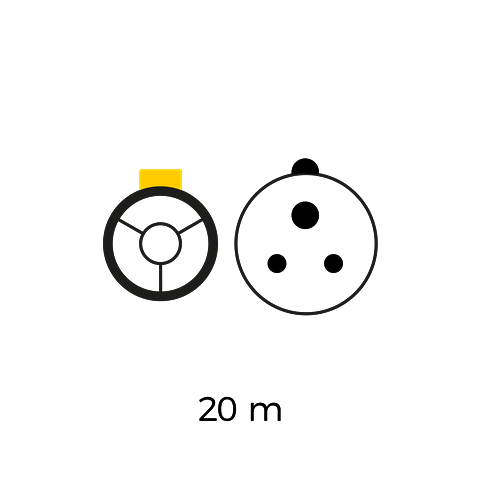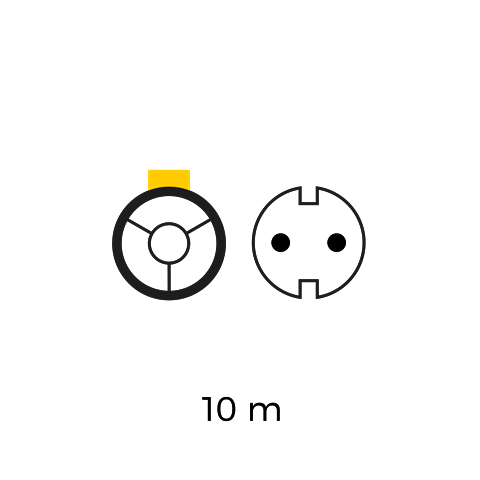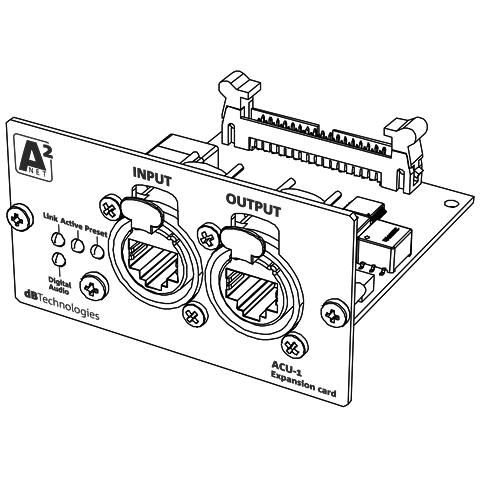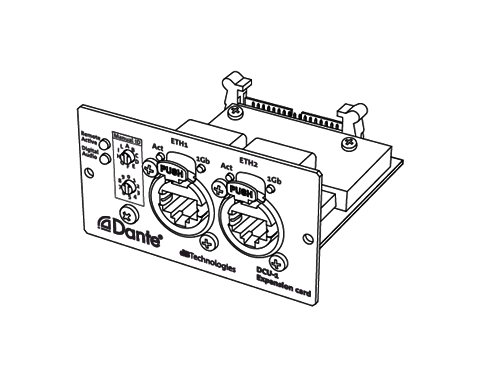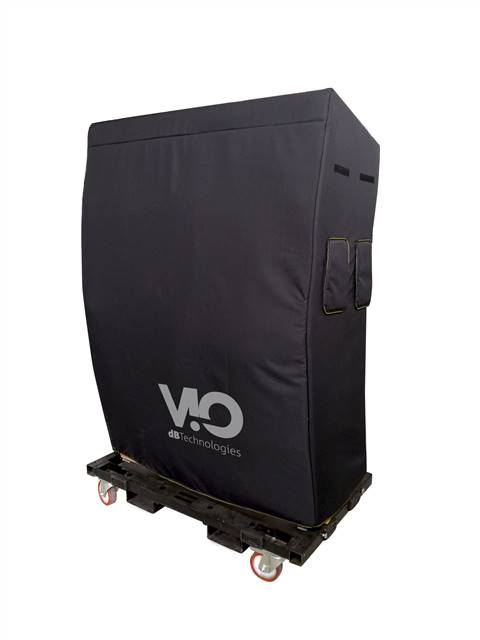380V resistant SMPSThe final amplifiers will be switched off in case of an undesired strike of 380V current, saving them from any damage. The auxiliary power supply - 380V tolerant - determines a safe range of operability for the man power supply.
Aurora NetThis product is fully-compatible with Aurora Net software
Digipro® G4The latest System of digital amplification engineered by dBTechnologies.
EASE FocusEASE Focus makes configuring a DVA or VIO system so much easier as this software simulates the system in the virtual realm. It can depict several audience target zones at the same time to map out more intricate venues including different coverage areas such as arenas, bleachers, and balconies. Color 2D graphics provide an easily understandable view of throw patterns and sound pressure levels so you can configure the array for the best possible results. It also offers you easy access to key rigging parameters such as the height of the rigging frame, the choice of pick points, the array’s bend, total weight, and system preset selections.
Expansion Card SlotThe preamplifier comes with a RDNet card installed. The user will be able to upgrade the system by replacing the RDNet card with an Audinate Dante card for audio over Ethernet and remote control on a single cable solution - sold separately.
Linear Phase FIR FiltersA low-latency sound processing featuring Linear Phase FIR filters allows cabinets to deliver an extremely coherent audio performance, standing out for its intelligibility and clarity from every listening position. This is also achieved by making the phase response as linear as possible, avoiding any distortion.
I.P.O.S.The lntelligent Power-On sequence circuit controls the sequence in which the main power supplies of all units within an array ramp up. As a result, each module is switched on in a different time frame, keeping the overall system’s inrush current low.
InclinometerInside every array of VIO series, you can find a sensor that allows you to check immediately the absolute inclination in degrees of flown speaker through Aurora Net software. This turns out to be very useful when you need to verify the correct installation of flown speakers.
Neodymium TransducersNeodymium is a metal belonging to the family of the “rare earth”, a particular material which creates a powerful magnetic field once charged. This material, used in acoustic transducers, possesses a far superior magnetic power compared to the classical ferrite which allows its dimensions to be reduced, favoring its weight and space capacity.
NFC and LEDNear Field Communication proximity sensors are used to determine the position of each box within an array. This technology, together with a hi-brightness LED bulb on the front of the enclosure, contributes to help the user to recognize and match each box with their position on the remote control software.
Opto-isolated PreampThe floating audio input design grants a digital optical isolation between earth ground from the mains and the audio ground flowing into the Preamplifier board.This galvanic isolation greatly improves resistance to interferences and any unwanted buzzing and noises.
PFC (Power Factor Corrector)The Power Factor Corrector greatly improves the efficiency of the system. Performances of the amplifier are very stable and consistent, regardless of the quality of the mains. This also grants a worldwide compatibility of the power supply - from 90V to 265V 50/60Hz - and limits power consumption.
RDNetDigital net for bi-directional control of connected devices. The acronym RDNet originates from the development, on behalf of RCF and dBTechnologies, of a universal network which allows adjustments in real time and supervision of all the connected systems, using cables based on ethernet cat 5 wires. With the specific software and the interfaces control 2 and control 8, a complete command of the acoustic system will be possible allowing real time supervision on each electrical component of the various speakers. RDNet allows you to monitor levels, limiters, and temperatures, select system presets, configure setups off-line, Mute units, Group modules and assigning group EQ, delay and phase, test individual components, automatically address system components, tap into LAN and USB interfaces, extend the network via wireless LAN access points.
System TestA built-in measurement system can read the transducers impedance in real time and provide an instant feedback on the health of your system.This controls is performed constantly or it can be forced by the user at any time, remotely or from the amplifier panel.
USB Data PortThanks to this universal data port, the user will be able to perform firmware upgrades















